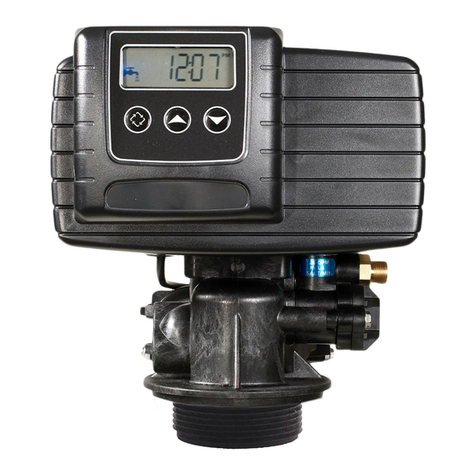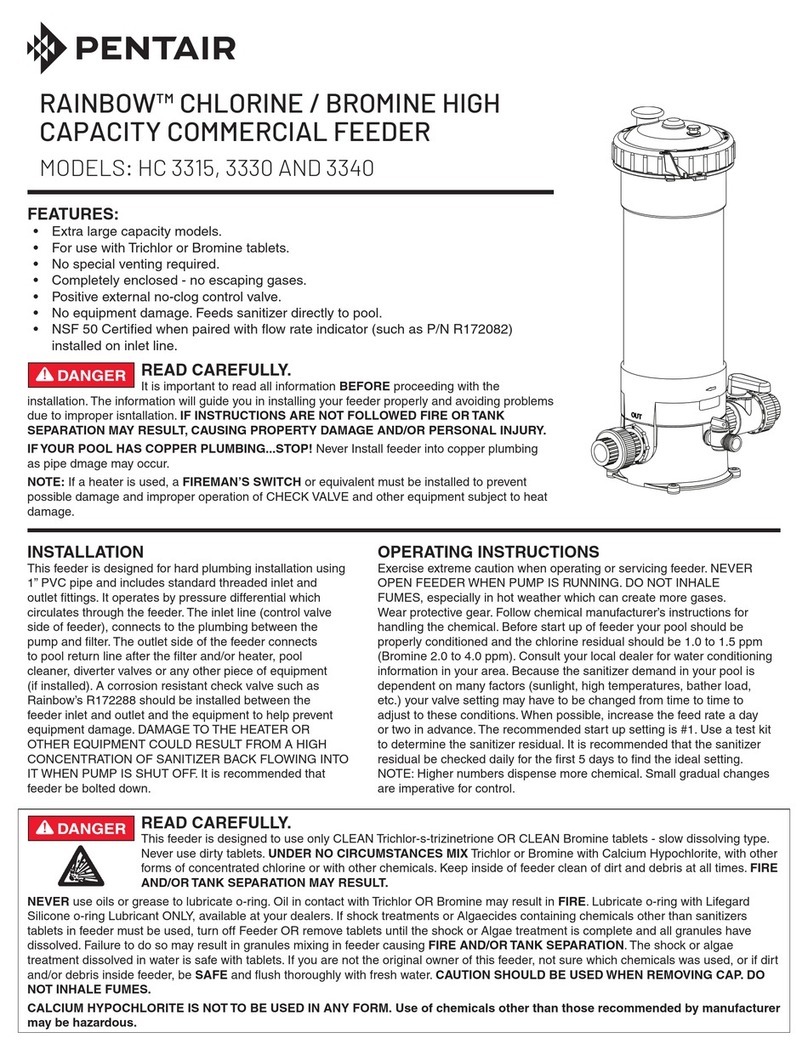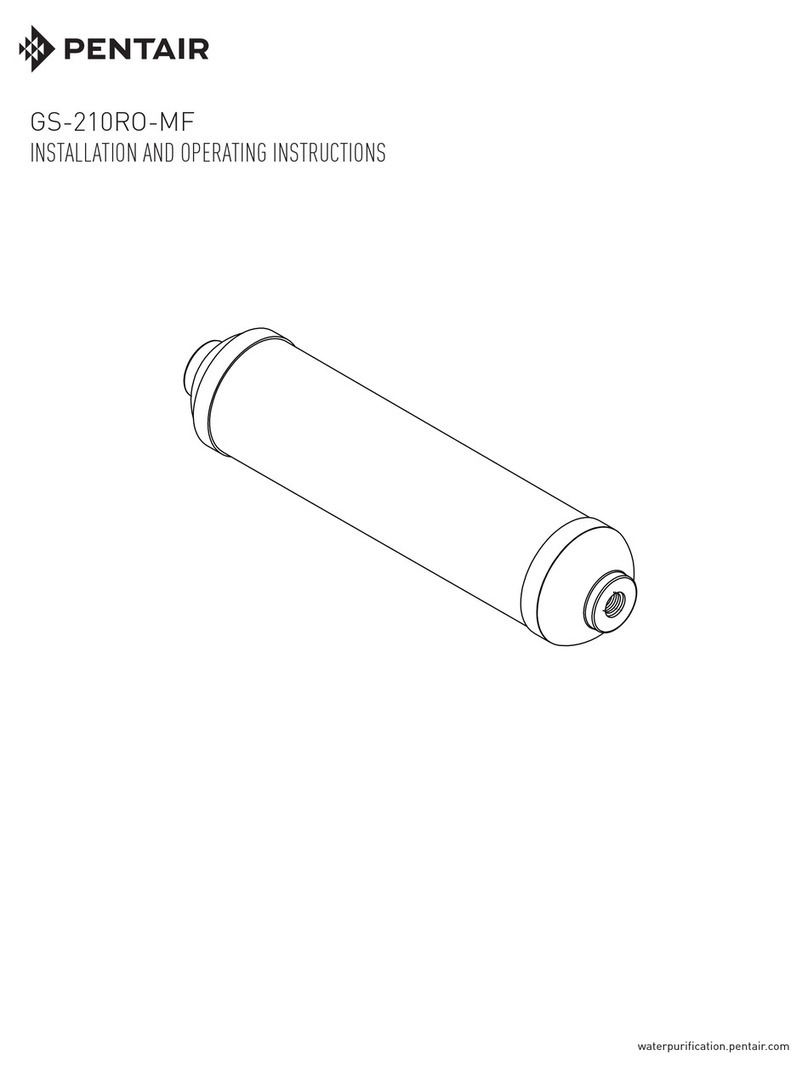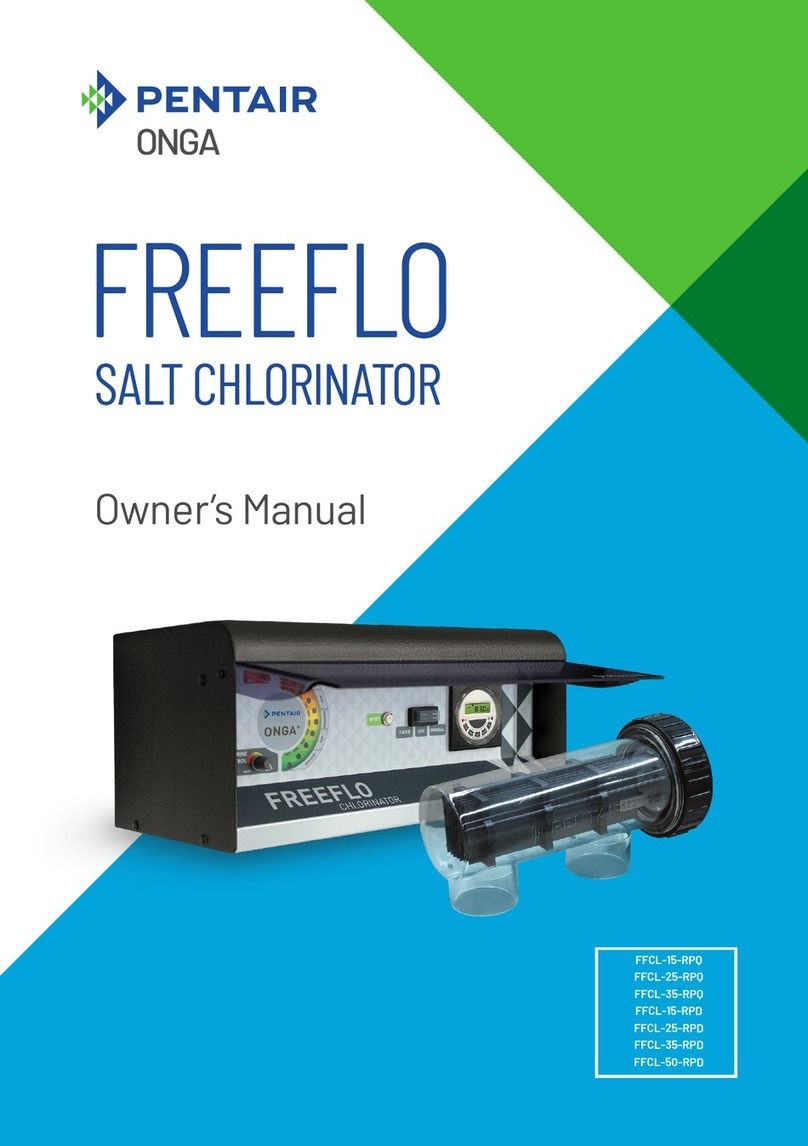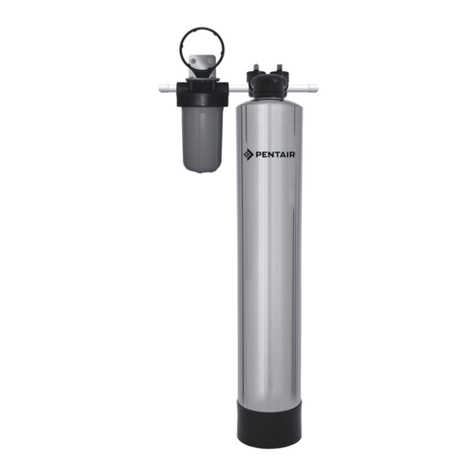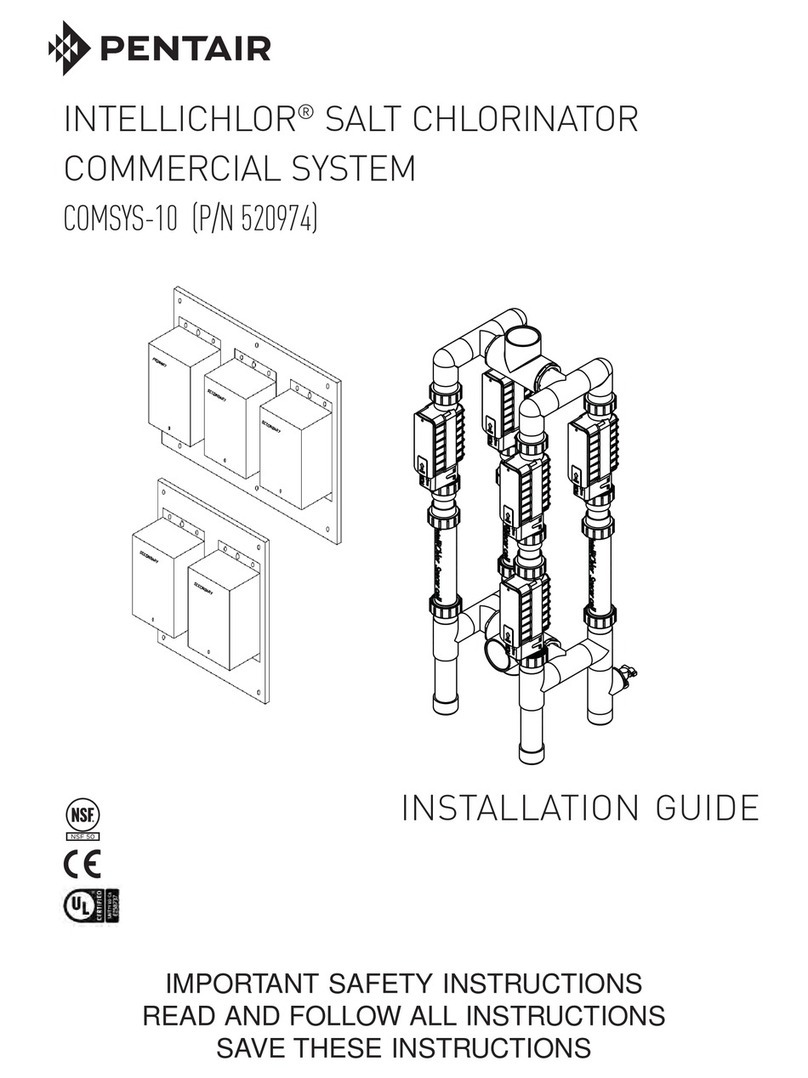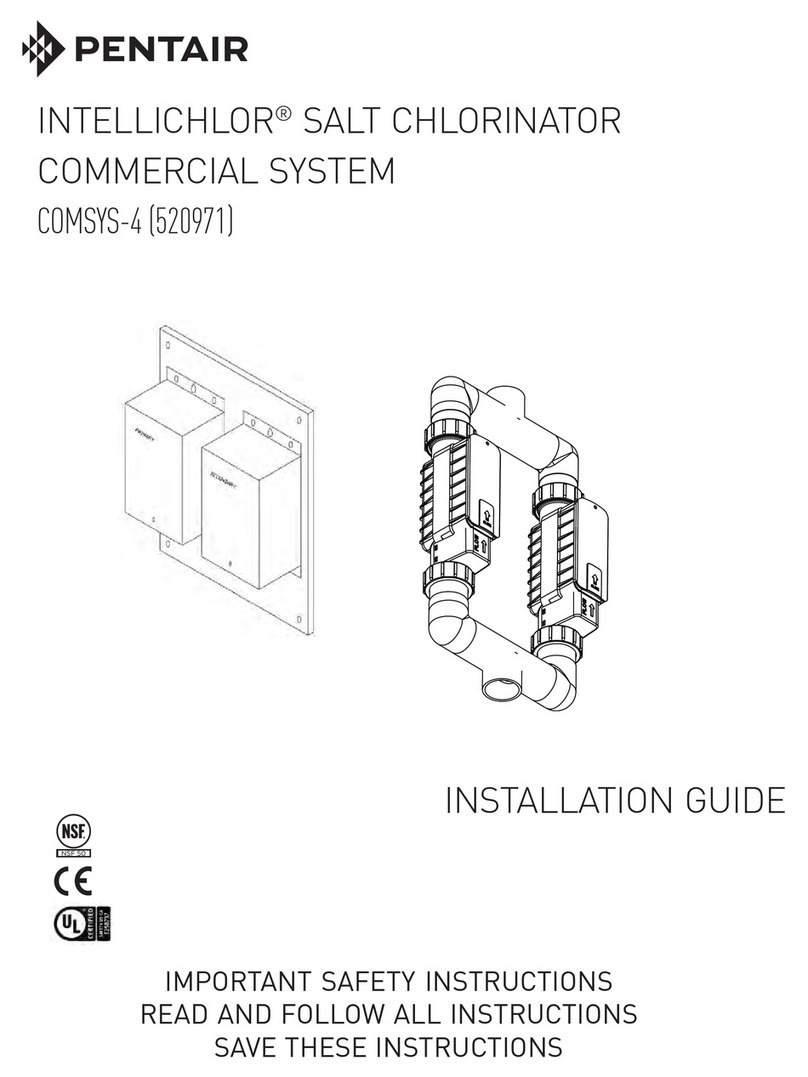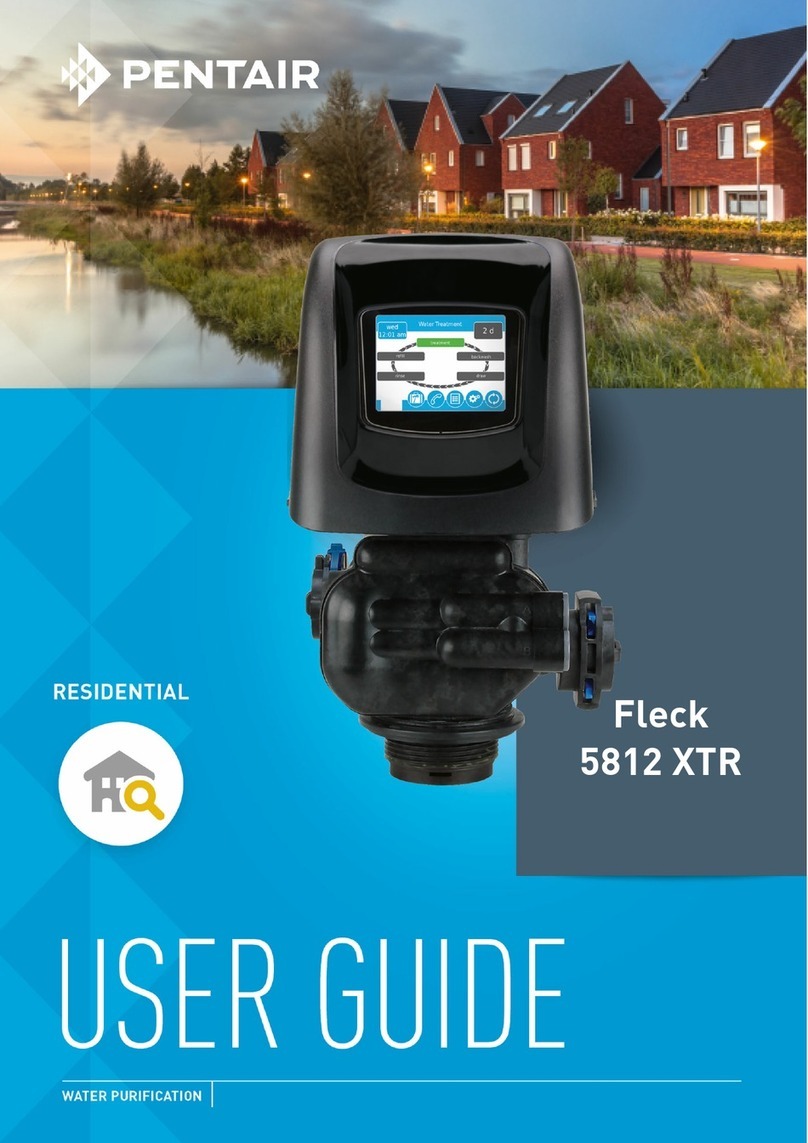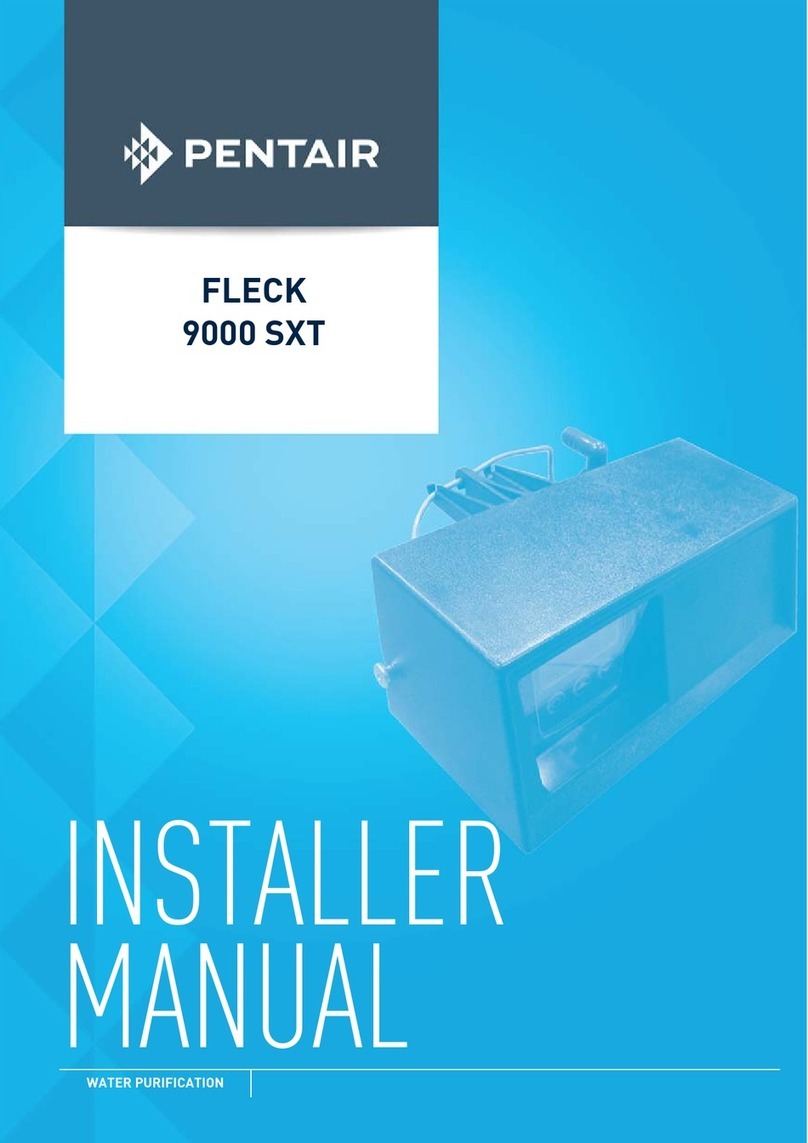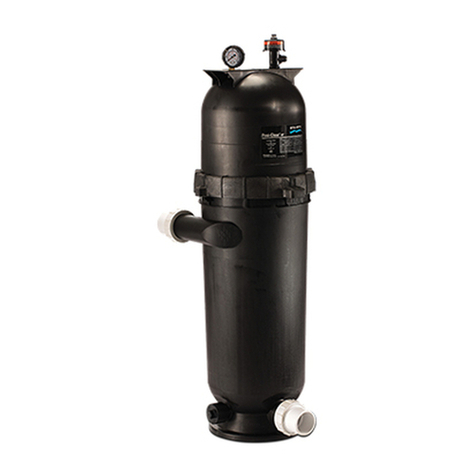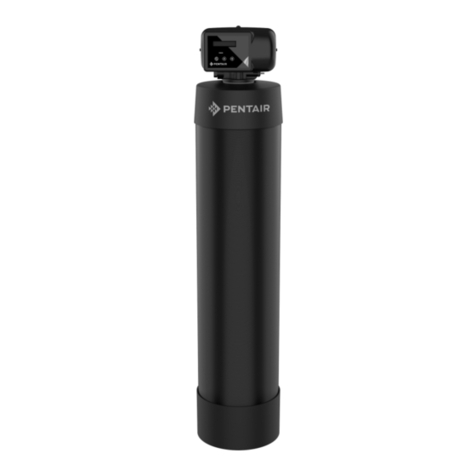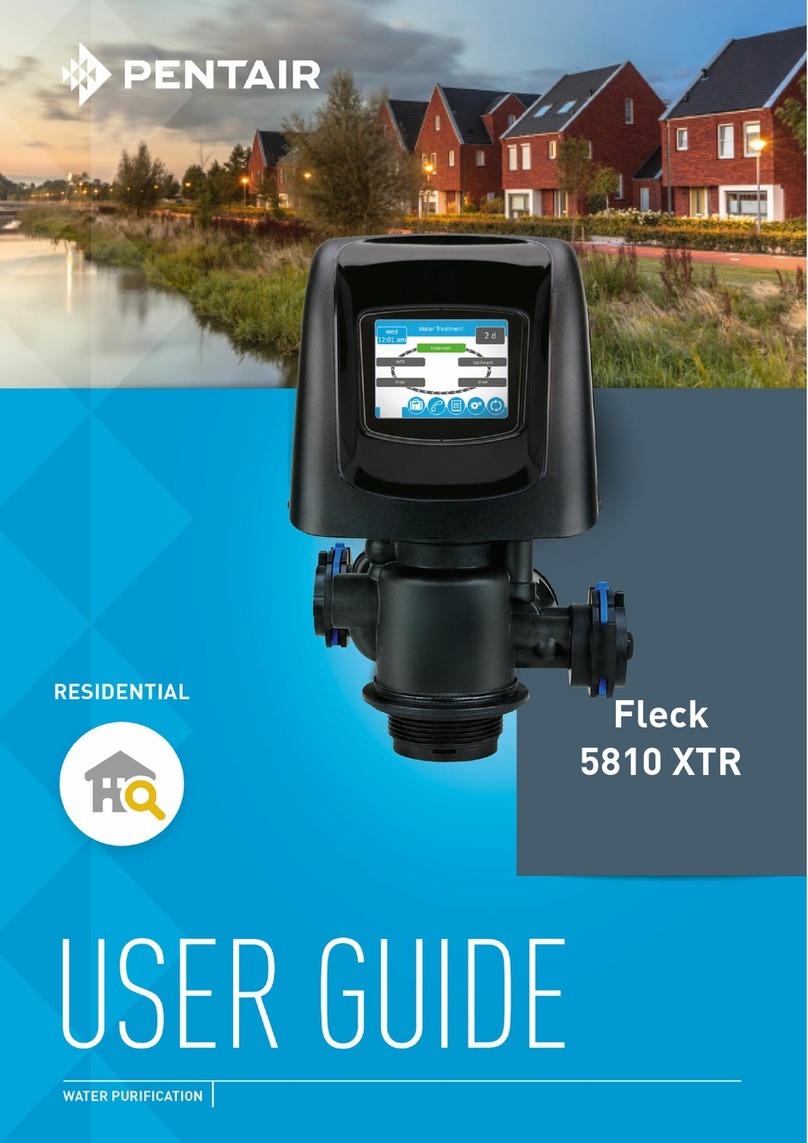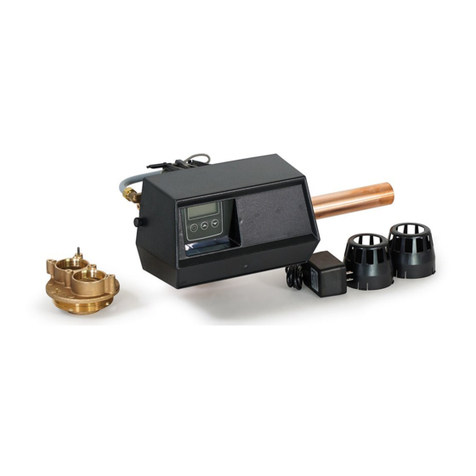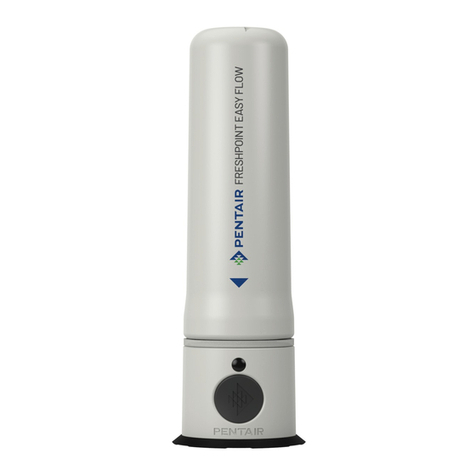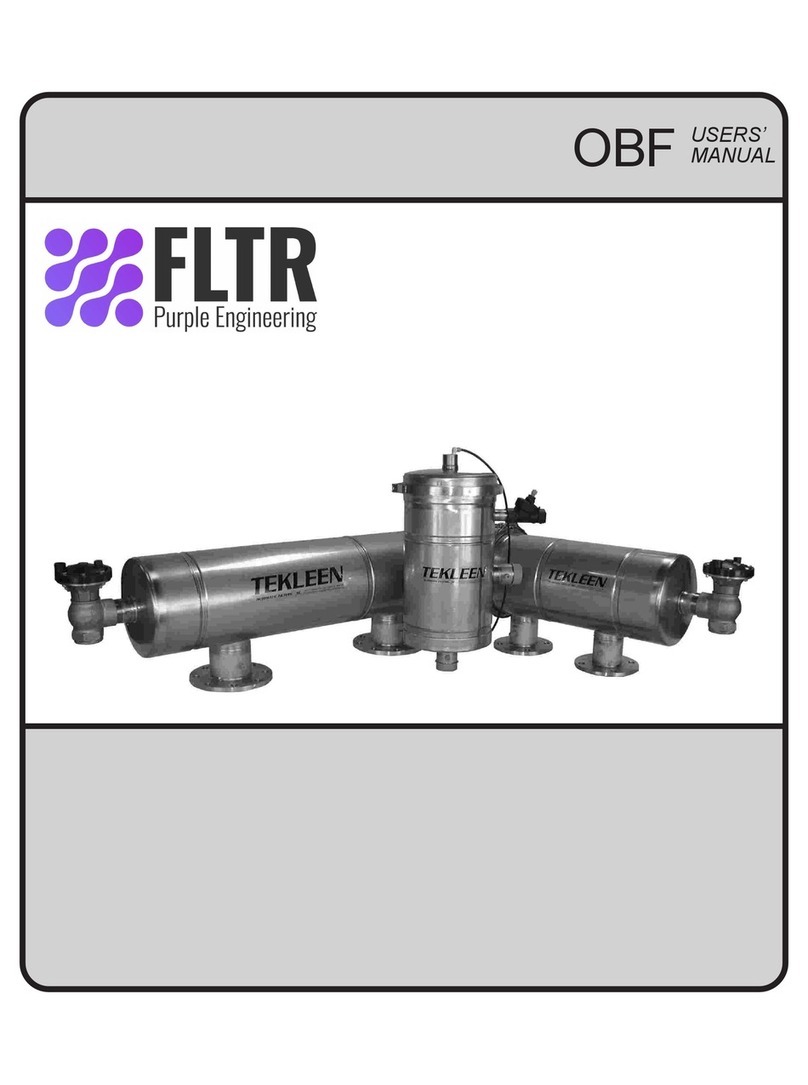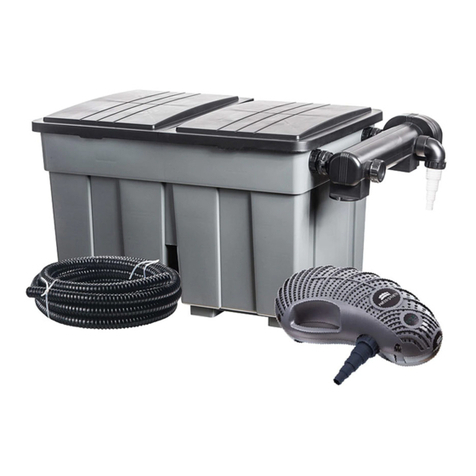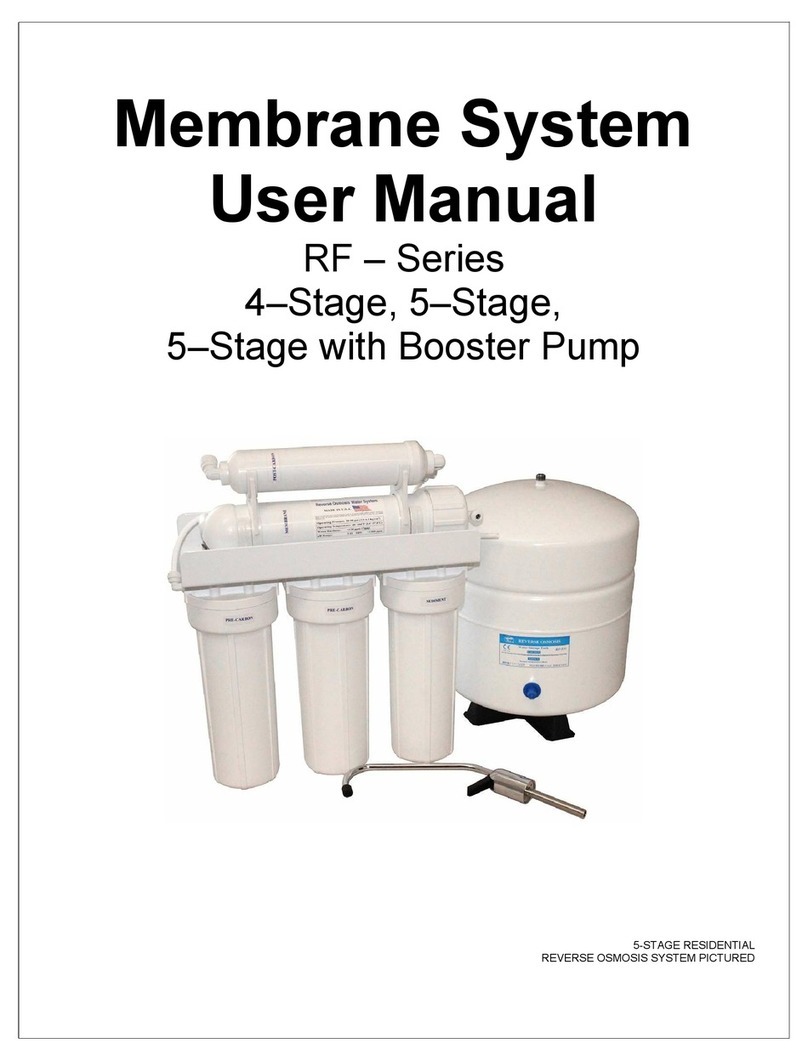
23833A631 11/08/12 6
Step 5: Check the pump amperage with a clamp-
on amp meter on the black pump lead. Readings
higher than the nameplate indicate a clogged pump,
miswiring, or improper voltage.
Step 6: Ensure H-O-A switch is set to Auto before
placing system into service.
Below is a list of common problems and possible
solutions. Refer to the pump and panel installation
service manuals for details regarding any necessary
adjusting, dismantling, or repair work.
WARNING: Risk of electrical shock or electrocution.
Failure to heed these warnings may result in serious
injury or death or fire hazard. Installer must disconnect
all electrical sources prior to installation. Only qualified
personnel may install or service this system. NFPA
70/National Electric Code (NEC) or local codes must
be followed. System must be properly grounded
according to NEC or local codes.
WARNING: Before installing or servicing your pump,
BE CERTAIN THAT THE PUMP POWER SOURCE IS
TURNED OFF AND DISCONNECTED.
Pump won’t run
1. Blown fuse, circuit breaker is in Off position,
broken (or loose) electrical connections. Check
fuses, breakers, and all electrical connections.
2. Motor overload protection contacts open.
Contacts will close automatically within short
time.
3. Low voltage. Check voltage at control panel.
Pump runs, but no water pumped
1. Check valve installed backward. Reverse and
reinstall.
2. The intake strainer is clogged. Remove the pump
and clean the strainer.
Reduced capacity
1. The strainer or impellers partially clogged or
plugged. Remove the pump and clean the
strainer.
Basin level is pumped down with H-O-A in Hand
or Manual position, but will not pump down in
Automatic.
1. Floats are not hanging free in the basin or are
covered with grease. Pump the level down with
the H-O-A switch in Hand or Manual, so that
the floats can be observed. Relocate and clean
float(s) as necessary.
2. If this is a new installation and original start-up,
the floats may be miswired in the control/alarm
panel. If the On and Off floats are reversed, the
pump will short-cycle On and Off and will not
pump the level down.
3. Floats are malfunctioning. Pull the floats out of the
basin and hang the Off and On floats from your
hand. Turn the H-O-A switch to Auto. Tilt the Off
float so that the large end is above the cord end
(nothing should happen). While keeping the Off
float tilted, tilt the On float in the same manner
(the pump should come on). Suspend the On float
again from your hand (the pump should continue
to run). Finally, suspend the Off float from your
hand (the pump should stop running). If this
procedure does not cause the pump to operate as
described, replace the float(s).
Biohazard Risk. Once the wastewater source has
been connected to system, biohazard risk exists.
Installer(s) and/or service personnel must use proper
Personal Protective Equipment and follow handling
procedures per OSHA 29 CFR 1910.1030 when
handling equipment after wastewater source has been
connected to system.
Risk of fire or explosion. Do not smoke or use open
flames in or around this system. This system is not
intended for use in hazardous locations per NFPA 70
National Electric Code. Consult factory for optional
equipment rated for this use.
WARNING: Before installing or servicing your
pump, BE CERTAIN THAT THE PUMP POWER
SOURCE IS TURNED OFF AND DISCONNECTED.
The pump vault system requires periodic maintenance
to ensure proper operation.
Service Frequency
The pump vault system prevents solids larger than
1/8" from entering drain lines. As a result, solids will
periodically build up between the housing and filter.
This requires the filter to be cleaned off. The service
interval will depend upon usage patterns.
At a minimum, the pump vault housing and filter
should be cleaned each time the septic or pump tank
is pumped out. Annual inspections by certified service
personnel are recommended.
Any high water alarm is an indication that attention
to the system is required. Frequent high water alarm
activation is an indication that system service is
required.



